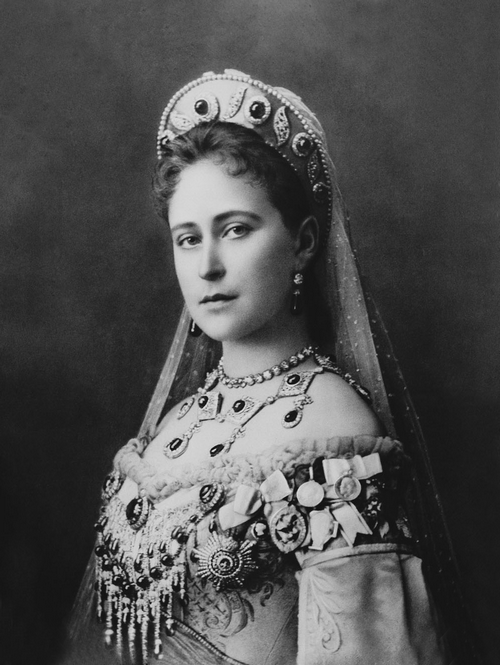
Princess Elizabeth of Hesse and Rhine, later known as Grand Duchess Elizabeth Feodorovna of Russia after marriage, was known for her incredible beauty and charitable duties towards the poor people of Moscow. Elizabeth was the second child of Ludwig IV, Grand Duke of Hesse and by Rhine, and Princess Alice, who was the daughter of Queen Victoria. Elizabeth and her siblings had a rather modest upbringing. She and her siblings swept floors while her mother Alice sewed clothes herself for all her children. It was a protected but happy environment for Elizabeth as a child.
Tragedy struck the family in 1878, when diphtheria spread in the Hesse family. Elizabeth was sent away to her paternal grandmother's home at the start of the outbreak, thus, she was unaffected by the disease. Her younger sister Marie however, died on 16th November and her mother succumbed to the infection on 14th December. When Elizabeth finally returned home, she called it the most devastating experience, one that was like a horrible dream and full of sadness.
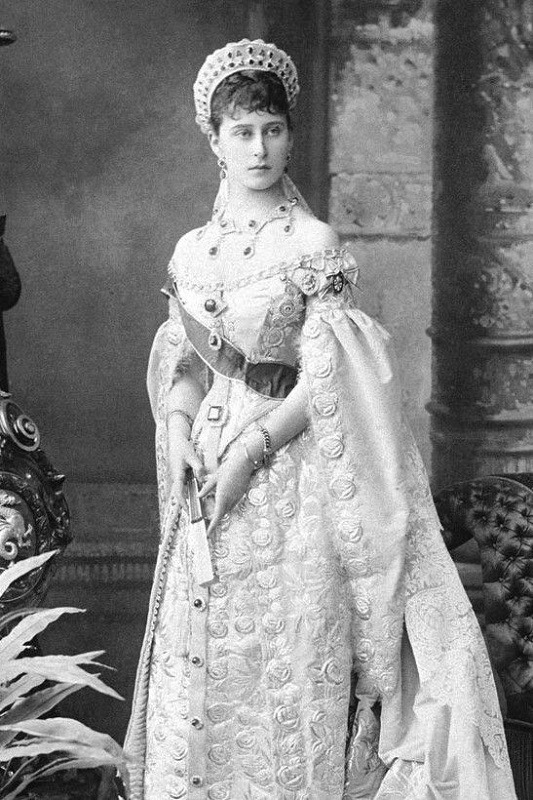
Elizabeth grew up to be an exceptionally beautiful young woman and her suitors’ list was endless. In fact her cousin Prince Wilhelm of Prussia fell in love with her while he visited his Aunt Alice and his Hessian relatives in Darmstadt. He was so taken by her beauty that he proposed to the 14 year old Elizabeth in 1878, but she rejected his proposal. Some of her other ardent admirers included Lord Charles Montagu, Frederick II, Grand Duke of Baden, Grand Duke Konstantin Konstantinovich of Russia, Prince Felix Yusupov and Henry Wilson, who later became an eminent soldier. Elizabeth rejected all of their advances.
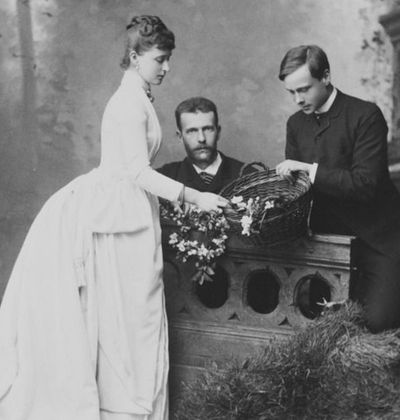
Finally the one who succeeded in winning the princess’s heart was Grand Duke of Russia. Sergei and Paul would visit Hesse along with their mother Empress Maria Alexandrovna of Russia, who was Elizabeth’s grand aunt. Ella (Elizabeth) had known both the boys since her childhood and found them rather reserved and arrogant. But seeing Ella after so many years, Sergei, who was the serious and intellectual one, was infatuated by her beauty. Things took a different turn when he lost both his parents within a year of each other. Elizabeth, who had lost her own mother at a very tender age understood his pain and sympathized with him which drew them closer. Not only the grief, but they had common interests like being artistic and religious.
Sergei proposed to Ella in 1883 and she accepted. Her grandmother Queen Victoria frowned upon the alliance and tried to persuade Ella to end the engagement but as destiny would have it, the couple got married in June 1884, at the Chapel of the Winter Palace in St. Petersburg. They lived in the Beloselsky Palace in St. Petersburg. Sergei presented his bride with his mother’s magnificent emeralds. Elizabeth wore the necklace, stomacher, and a few emerald pieces on a Kokoshnik made of fabric. She later asked the royal jeweler Bolin to use the pieces and make it into a stunning tiara.
Her conversion to Russian Orthodoxy from her native Lutheran religion was found unacceptable by many. The Duchess however, made a wonderful impression on the people of Russia and her in-laws. She became known for her lively and social parties that she organized especially for children. The Grand Duchess and her husband Grand Duke Sergei Alexandrovich of Russia never bore children of their own but later became the foster parents of Grand Duke Dmitri Pavlovich and Grand Duchess Maria Pavlovna, who were Sergei's nephew and niece.
When Duchess Maria married Prince Wilhelm of Sweden, Duchess Elizabeth Feodorovna gave her Kokoshnik tiara and necklace to her. After the Russian revolution broke out, Maria had to sell the jewelry to King Alexander of Yugoslavia. The latter then presented the stunning necklace and tiara to his bride Princess Marie of Romania on their wedding day in 1922. The magnificent Kokoshnik tiara adorned 7 emerald cabochons, among several smaller diamonds set in a geometric pattern along with small lilies of the valley.
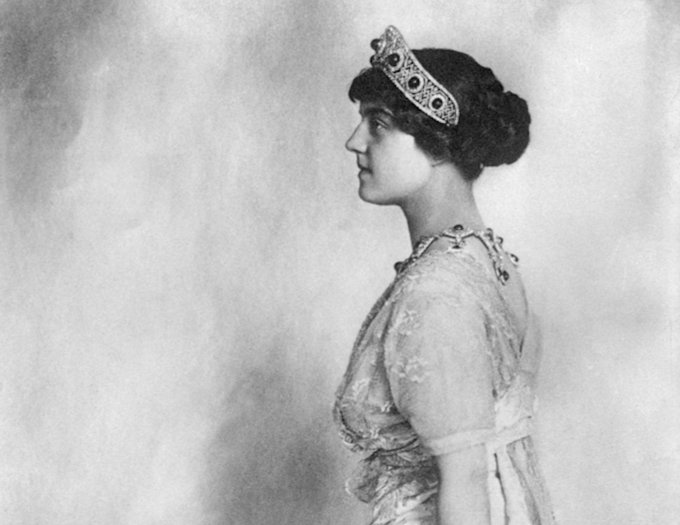
Tragedy struck Elizabeth’s life once again in 1905, when her husband Sergei was assassinated in the Kremlin by the Socialist-Revolutionary party member Ivan Kalyayev. Elizabeth was shocked and horrified but never lost her calm. She refused to cry and would stare blankly into space. Her friends and family feared she would have a nervous breakdown but after a brief bout of sobbing, Elizabeth regained her composure. She publicly forgave Kalyayev for the dastardly act. He however refused to repent for his actions and was hanged in May 1905.

After her husband Sergei’s passing, Elizabeth sold all her incredible jewels, along with her wedding ring and other luxurious possessions and founded the Convent of Saints Martha and Mary. She became a nun and the convent’s abbess. She later started a hospital, pharmacy, chapel, and orphanage on the same ground. She and her convent nuns worked day and night helping the impoverished and ailing people of Moscow. In 1918, Elizabeth’s arrest was ordered by Vladimir Lenin. He asked the Cheka to arrest her. She was taken into exile and was joined by the Grand Duke Sergei Mikhailovich; Princes John Konstantinovich, Konstantin Konstantinovich, Igor Konstantinovich and Vladimir Pavlovich Paley; Grand Duke Sergei's secretary, Fyodor Remez; and Varvara Yakovleva, who was a nun from Elizabeth’s convent. When they were taking shelter at a Napolnaya School, the Cheka guards barged in and arrested them all. They took them to an abandoned iron mine, in the village of Siniachikha. There they beat up the prisoners and threw them into a 20 feet pit. The first was Elizabeth. She however survived the fall at first and started singing an Orthodox hymn. The executioners heard the song and tossed three grenades one after another down in the shaft. When the singing still continued, they threw in a huge pile of brushwood and set it on fire. Grand Duchess Elizabeth and her family had a horrifying death and is buried in the Church of Mary Magdalene at Gethsemane.
The Duchess has been canonized by the Russian Orthodox Church Outside Russia in 1981, and later in 1992 by the Moscow Patriarchate, naming her ‘Holy Martyr Elizabeth Feodorovna’.
The incredible Kokoshnik tiara of Elizabeth still remains today even after the brutal murder of it’s owner. In 1947, Queen Marie, lent the tiara to Queen Alexandra for the pre-wedding ball of Queen Elizabeth and the Duke of Edinburgh in London.
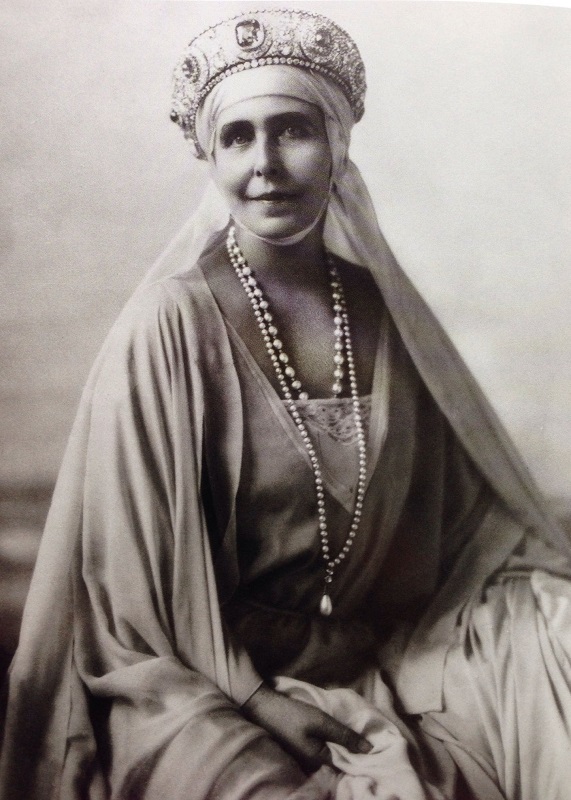
The tiara was sold to Van Cleef & Arpels in 1953. They removed all the precious Romanov emeralds from the Tiara and sold it to an unknown buyer and have replaced them with paste. It has been worn by several celebrities and members of the royal family of late including Princess Elizabeth of Yugoslavia.
Adastra Jewelry believes in bringing back the jewelry that has been lost in time, replicating The Yugoslavian Emerald Tiara from scratch.
The Maria of Yugoslavia Kokoshnik Tiara is a breathtaking masterpiece inspired by the historic Yugoslavian Emerald Kokoshnik. Designed to mimic the headdresses worn by Russian women, these tiaras soon became popular amongst the women of the Romanov court. The beautiful emeralds that formed the centrepiece of the tiara were originally of the Grand Duchess Elizabeth. Used as jewelry on a number of items these Emeralds were used on pieces such as a stomacher, necklace and a Kokoshnik made of cloth embellished with a few emerald pieces. Replicating the original, this exquisite tiara features seven meticulously handpicked emerald cabochons, sourced from Jaipur, India. The tiara was made from brooches which are detachable and can be worn seperately making it unique. These vibrant gemstones are intricately arranged in a geometric pattern, brought to life by the expert craftsmanship of our skilled Indian artisans. With over 240 hours of dedicated work, this tiara is adorned with 5A grade AdStar Diamonds having a total weight of 150 ct green and a height of 9cm. Every detail of the original tiara has been carefully recreated, honouring its historical essence.

The Yugoslavian Emerald Kokoshnik Tiara








